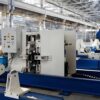-
Warning: Undefined array key 0 in /www/wwwroot/wisperconveyor.com/wp-content/plugins/elementor-pro/modules/dynamic-tags/acf/tags/acf-text.php on line 33
Warning: Undefined array key 1 in /www/wwwroot/wisperconveyor.com/wp-content/plugins/elementor-pro/modules/dynamic-tags/acf/tags/acf-text.php on line 33





































